Two-Block Brady Street Pedestrian Zone Proposed
Business district will do formal study with goal of a trial as early as this summer.
There is a lot of analysis to be done and options to be studied, but, if the stars align, a portion of Brady Street could be closed to motor vehicle traffic and repurposed as a pedestrian zone starting this summer. The closure would be a trial, part of a multi-year effort to increase the vibrancy and diversity of the Lower East Side commercial corridor.
The Brady Street Business Improvement District (BID) has hired engineering firm GRAEF and architecture and design firm The Kubala Washatko Architects to formally study pedestrianizing a portion of the Lower East Side commercial corridor between N. Warren Ave and N. Franklin Pl. The two-block stretch, just a block from N. Farwell Ave. and N. Humboldt Ave., has the highest density and greatest number of businesses.
She said restricting the scope to the two-block stretch limits the number of conflicts with driveways and creates an area that BID could help program and maintain. “If we are going to be taking a look at anything, I want to make sure it has the best chance of working out,” she said.
“I’m hoping for a couple of ideas that we can kind of pick and choose what’s effective. I am the staff for the BID. That’s it. So we need some solutions that are not hyper-dependent on multiple staff members,” said Taylor.
The street is one of the city’s oldest commercial corridors, but its vibrancy has ebbed and flowed throughout the city’s history alongside immigration waves, deindustrialization and suburbanization.
“How do we make sure we are still a destination in Milwaukee instead of a thoroughfare as we have been?” she said, referencing the draw of Fiserv Forum and Deer District and the need for historic commercial streets to compete. “The goal is not to have Bourbon Street.” That includes not having a permanent open alcohol container zone.
She said several community meetings would be held to discuss the resulting proposals. Additionally, the Common Council and Mayor Cavalier Johnson would need to sign off on any proposals. “If we are going to make a major change like pedestrianization we have to be cognizant of the historical importance that it’s going to have and the impact on people. They are trained you can shoot down Brady Street to get from point A to point B. How do you change that mindset that you can’t shoot down Brady Street; you have to interact with it?”
Taylor expects the BID will receive plenty of feedback on whatever is proposed. She said the BID will support any decisions with data. Some of that will come from UW-Milwaukee professor Robert Schneider and his students, who will also study pedestrianization and its success in other cities.
“The only thing we always ask is people remember there is no need for threats, obscenities, anything of that nature. It’s unnecessary,” said Taylor. “No one is going to be making any permanent moves at any point without multiple discussions.” She said she has recused herself from voting on the matter with the BID board. “This is for the residents. This is for the people of Brady Street. What’s the point of doing all this work without getting their input?”
“The Brady Street neighborhood is incredible. It’s also got some serious challenges when it comes to bike and pedestrian safety,” said Brostoff. “Given the recent and horrific tragedies we need to start looking for creative solutions. I’m excited to work with the community and make Brady Street even more vibrant, walkable, family-friendly and welcoming.”
The BID and city could move quickly said the BID director, with a study completed this spring and an implementation tested on a temporary basis this summer.
“That is a massively tall order that I am very aware is probably not feasible,” said Taylor. She said part of the analysis would include evaluating neighbor and business feedback, the closure’s value to the adjacent Tamarack Waldorf School and any other unforeseen impacts. “All of these things need to be taken into context and reviewed before any permanent decisions need to be made.”
The plan will include options for keeping the Milwaukee County Transit System‘s GreenLine bus route on the street. The route, which runs from the airport to Bayshore shopping center, is one of the most heavily traveled in the system. “If we are going to be taking away some options when it comes to cars, we still are going to need a way for people to come down here and I’m a big, big supporter of mass transit,” said Taylor.
The Brady Street BID is funded by a special property tax assessed on commercial properties within its boundaries. Taylor said the group is working with Brostoff and other city officials on options to fund the pedestrian zone.
Milwaukee previously had a six-block pedestrian street on Mitchell Street. It was removed in 1995, two decades after it was installed. Many cities across the country installed pedestrian malls during that same period in an attempt to allow historic retail streets to compete with suburban shopping centers, but many of the efforts failed. Taylor said her hope is that the consulting team is able to pull best practices from elsewhere to develop options that would work for Brady Street.
With or without a pedestrian zone, more change could be coming to Brady Street. An 11-story hotel is proposed to replace a mostly-vacant building one block east of the proposed pedestrian zone.
If you think stories like this are important, become a member of Urban Milwaukee and help support real, independent journalism. Plus you get some cool added benefits.
Transportation
-
MCTS Adds 28 New Buses
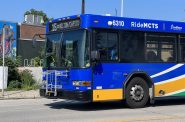 Jul 13th, 2024 by Graham Kilmer
Jul 13th, 2024 by Graham Kilmer
-
MCTS Designing New Bus Shelters
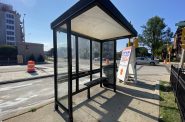 Jul 10th, 2024 by Graham Kilmer
Jul 10th, 2024 by Graham Kilmer
-
MCTS Updates RNC Bus Detours To Better Serve Downtown, Riders
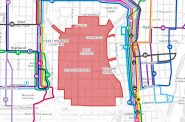 Jul 9th, 2024 by Jeramey Jannene
Jul 9th, 2024 by Jeramey Jannene


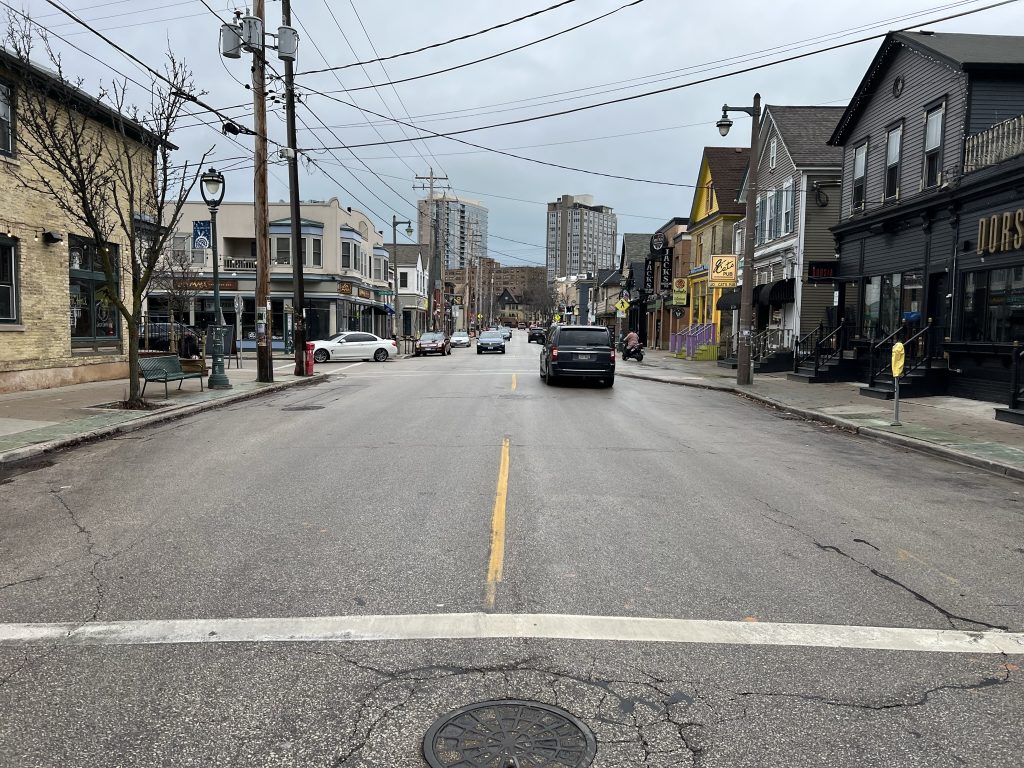

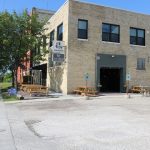




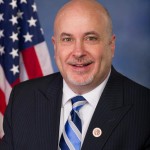




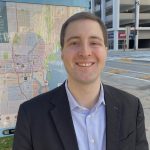








Boy, oh, boy…talk about throwing pasta against a wall to see what sticks! First, pedestrianizing Brady was being touted as a traffic calming method after a terrible accident. Now, it might not only boost BID vibrancy but also “diversity” (whatever that means), help Brady Street bars compete with the Deer District while, conversely, making the BID more family-friendly, increasing public safety, increasing health outcomes, reducing asthma rates and cutting auto insurance costs! Any buzz words missing, here? World peace, anyone?
I don’t hear much about simply employing tried-and-true traffic calming methods. To be clear, the BID has its own interests in mind, not those of the bigger Lower Eastside community. Remember who’s paying for this “study,” and watch for what is and is not considered as options.
Here’s the question this study will NOT ask: “Why is Brady Street not vibrant, safe, or friendly without needing to block the street to auto traffic?”
I happen to live in Lakeview East in Chicago, arguably the most vibrant neighborhood in Chicago. Specifically, I live on Halsted Street, right in the middle of the Northalsted Business Alliance’s stretch that promotes what used to be called “Boystown.” We have three major street fairs and a huge parade every year that attracts people from all over the world. Halsted street is bar heavy, and also is home to a Whole Foods, a tea store, at least two veterinary clinics, a couple smoke shops, a key shop, a health clinic, restaurants, a senior living facility and many other businesses. I also live two blocks from Wrigley Field and the Clark Street corridor, another historically bar heavy BID with the new Wrigley developments, including a hotel, apartments, and Gallagher Way, a Cub-owned “public space” the hosts many events, including the holiday Cristkindlmarket. Wrigley also hosts 5-6 major concerts every summer.
Lakeview is super vibrant, packed with three-story walk-ups, residential skyscrapers as high as 50+ stories, friendly, even diverse, and NO ONE HAS EVER SUGGESTED closing a street, not even for a couple blocks. Lakeview East is vibrant on its own without even thinking that traffic engineering will be a panacea for the area’s ills. Cars and busses pass through and also serve both residents and visitors. Frankly, because we have been experiencing a bit of an uptick in crime, I am GRATEFUL with the amount of traffic in my neighborhood. More eyes, more lights, more activity. I feel SAFER with this traffic, especially at 2:00am when I need to take my dog out for an unexpected potty walk.
Brady Street doesn’t need to close a street to create a public space. And, true to the current MKE mindset, let’s focus on nightlife and bar culture as quick “fixes” to our development struggles. Blech…
I have lived in Milwaukee for decades, and I love Brady Street. It is good to hear a Brady Street pedestrian zone would consider allowing the Green Line bus to traverse the area. Such access would be key for alternatives to car travel. An emissions-free Green Line bus would be crucial to maintaining the usability of the pedestrian area.
Most pedestrian malls created in the United States have failed because their advocates see a walkable area and think that it will “draw” people. They think a car-free area will cause activity and vibrancy, when the successful pedestrian zones thrive with an already built-in flow of thousands of people crossing a diverse area from sunup to midnight for all manner of uses every single day.
State Street in Madison, Wisconsin works well–and is a transit mall as it (currently) allows buses along its length–and is an area with a built-in flow of students from the University of Wisconsin campus and people from the Wisconsin State Capitol. Times Square in NYC allows for a flow of people for all manner of reasons. Neither of those areas on their own–without their strong crossroads nature and flow from nearby activity centers–would be of significant activity warranting a pedestrian zone.
The failure of the six-block pedestrian street on Mitchell Street in Milwaukee should be studied in depth. In that project, the thinking was that large amounts of parking, which reduced density and uses for the area, would help, when in fact it hurt. It diluted reasons to be there except to have “easy parking,” which is available abundantly in the suburbs. Walking in a pedestrian zone among parked cars has all the charm of a suburban strip mall–that is, none. Few would cross town to see it. The idea that ample parking is going to be the cause of vibrancy is backwards. Parking must be managed (see ShoupDogg.com) and be recognized for a supporting (not starring) role. In fact, areas where parking is non-existent seem to be the most popular pedestrian zones in the world.
The area would have to be active 18hrs/7days a week and a complete neighborhood (most daily needs met nearby). Some ideas: 1) EMPOYMENT: an office building hosting a variety of companies, housing a total from 200 to 500 employees; 2) EDUCATION: a continuing education center for the many colleges in the area–a center of centers; 3) WORK: co-working spaces of various kinds; 4) HEALTH: a general medical clinic or wellness/walkin health center; 5) ENTERTAINMENT: a small, live indoor/outdoor theater or stage that runs everything from outdoor breakfast concerts to indoor jazz concerts to small plays, 365 days a year, all day and into the night; 6) HOMES PLUS: several major new residential towers, from 2 to 3 thousand more people; 7) MIXED USE: A multi-story, mixed use (try to set a world record for the most amount of different uses–micro museums to quirky shops and incubator, micro manufacturing spaces) building replacing the current parking lot by Walgreens; 8) ART and ENTREPRENEURS: artist and entrepreneur housing and studios; 9) all of the above. If this seems daunting, address the possible opposition to change, growth, and density that sometimes happens. There are examples of all of this in action now, to a degree, in Milwaukee’s Third Ward and in cities throughout the world.
Without a substantial, major leap in additional and mixed reasons to be in the area, 18 hrs a day/7 days a week, cordoning off a bar area to traffic will deaden the space and actually impede vibrancy and growth. The proposed 11-story hotel near the east end of Brady Street is one small step for the neighborhood. A fully realized Brady Street would have the potential to be a giant leap for all of the city.
Through the addition of many more modern uses, combined with historic facades and walkability, perhaps Brady Street could be the living embodiment of a modern “The Streets of Milwaukee,” and marketed as replacing what will be lost forever (“The Streets of Old Milwaukee”) when The Milwaukee Public Museum closes. Instead of a museum piece, Brady Street could make real the sense of place, time, history, streetspace enclosure, and activity of a people-oriented urban neighborhood.
It is important to note that there will a trial test of the pedestrian zone to see how this will work. These blocks of Brady Street–and much more–have been closed to traffic periodically for events like the Brady Street Festival, Brady Street Pet Parade, and special events like Harley festivals.
Predictions of “carmageddon” happening when traffic is restricted in an area have been proven wrong because the same misconceptions about traffic flow that gives rise to induced demand when traffic capacity is added (see Litman, 2022, “Generated Traffic and Induced Travel,” Victoria Transport Policy Institute) also seem to be at work when capacity is taken away.
Surface street examples include the permanent closure of part of NYC’s Times Square for pedestrian use described in the book “Streetfight: Handbook for an Urban Revolution” by Janette Sadik-Khan and Seth Solomonow (2016). “Carmageddon” was also predicted for Milwaukee’s 100th Harley celebration, the San Francisco 2016 super bowl, and many other events. In all cases, the fantasies of traffic tie-ups–that were asserted to be “obvious” in the face of current traffic flows–just did not happen.
A 2017 article in the Atlanta Journal-Constitution about the closing of I-85 in Atlanta for repairs called “‘Carmageddon’ predictions usually don’t come to pass” by Joseph Cortright outlines this fear. In Atlanta, a “carmageddon” did not come to pass, nor did it during the year-long closure of I-35W in Minneapolis, and not during the closure of a 10-mile stretch of I-405 on several weekends in LA.
Misconceptions about traffic flow and induced traffic can be used quite effectively by highway advocates to expand highways with more and more lanes. People easily (and mistakenly) believe that more lane capacity means traffic flows better–even when more than five decades of evidence shows this not the case–see Transportation for America, “The Congestion Con: How more lanes and more money equals more congestion”).
Peter Norton in his 2008 book, “Fighting traffic: the dawn of the motor age in the American city” traces the century-long campaign starting in the 1920’s to transform the American city from one in which streets were seen as the realm of people and multiple modes of transit to one in which streets were enshrined for cars and cars only. The result of this campaign is that the American mindset around cars and regulation of streetscape reacts violently to any disruption of the primacy of cars. This is a deep-seated mindset, protected by rhetoric and regulation. It has been overturned by results. Janette Sadik-Khan and Seth Solomonow’s book, “Streetfight: Handbook for an Urban Revolution,” gives a great account of the fears, opposition, and results. Likewise, misconceptions about car parking abound, and the Parking Reform Network (parkingreform.org) shows how rethinking parking would be key to any neighborhood like Brady Street in its change in streetspace use.